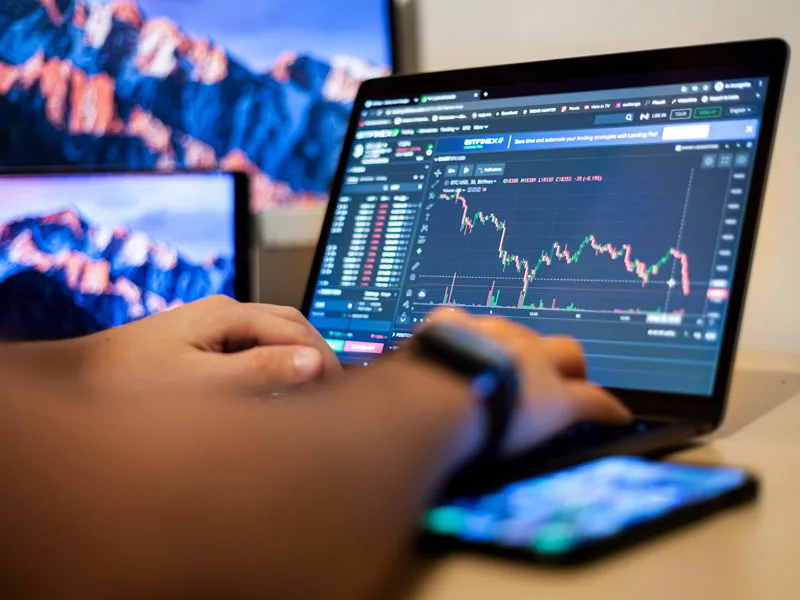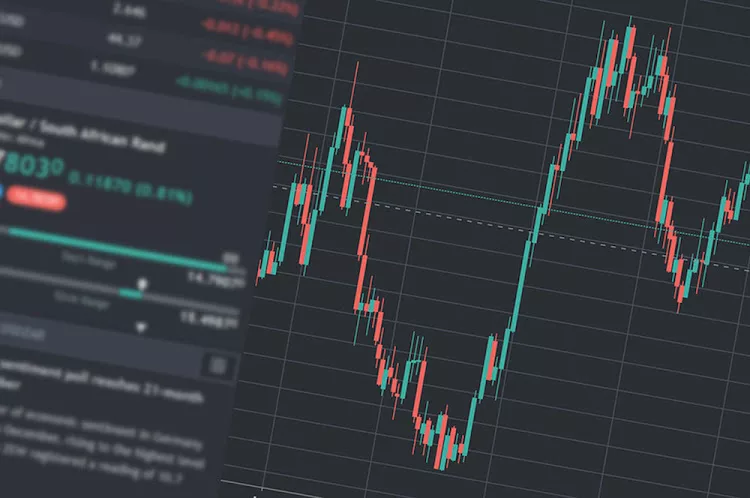Also known as foreign exchange trading, forex trading is the buying and selling of currencies in the global market. Forex trading offers the potential for high profits and is open to traders of all levels. It can be done on both online platforms and through traditional brokers. The goal is to profit from the changing values of currencies by buying low and selling and understanding forex market and economic indicators for better results.
While it is potentially a profitable venture, forex trading can also be a risky endeavor if proper knowledge and strategies are not applied. It is crucial to understand the market, terminologies and strategies to minimize risk and maximize profits.

Basic forex trading terms to know
Some basic terminologies you should be aware of when it comes to forex trading are:
- Pips: A pip is the smallest unit of price fluctuation in a currency pair. Pips are used to measure profit and loss in a trade.
- Leverage: A tool that allows traders to control larger positions with a smaller amount of capital. It is expressed as a ratio, such as 50:1 or 100:1.
- Currency pairs: The quotation and pricing structure of the currencies traded in the forex market. The most commonly traded currency pairs include EUR/USD, USD/JPY and GBP/USD.
- Margin: The amount required to open and maintain a position. It is expressed as a percentage of the position size.
- Margin calls: These are demands from the broker for a trader to deposit additional funds into their account to maintain their open positions. A margin call happens when the equity in the account falls below the minimum margin requirement.
- Technical analysis: A method of evaluating securities by analyzing statistics generated by market activity.
- Fundamental analysis: A method used to evaluate securities by analyzing their underlying economic and financial factors.
- Risk management: The process of identifying and assessing potential risks and taking steps to mitigate or manage those risks.
- Stop-loss and take-profit orders: A stop-loss order is an order placed to automatically close a trade at a certain level to prevent further losses. A take-profit order is an order placed to automatically close a trade at a certain level to lock in profits.
- Position size: The number of units of a currency pair that a trader controls in a trade.
Forex trading strategies
A well-thought-out forex trading strategy is crucial for success in forex trading. A trading strategy helps traders to make informed decisions by providing a clear plan of action based on market analysis, risk management, and money management techniques. Some of the strategies include:
- Hedging: A strategy that involves taking offsetting positions in the market to reduce the risk of loss. Hedging can be done by taking both long and short positions in the same currency pair or using derivatives such as options or forwards.
- Scalping: Scalping involves taking small, quick profits by buying and selling a currency pair multiple times within a short period of time.
- Trend following: This trading strategy involves identifying and following a market trend by buying or selling.
- Range trading: This involves identifying a range in which the price of a currency pair is likely to trade and taking positions accordingly.
- Breakout trading: A strategy that involves identifying key support and resistance levels and taking positions when the price breaks through these levels.
- Position trading: Position traders hold positions for an extended period of time, typically several days to several weeks or months, to profit from long-term market trends.
- Carry trade: This strategy involves borrowing a currency with a low-interest rate to buy a currency with a high-interest rate to profit from the interest rate differential.

Forex trading platforms
Choosing a trading platform is crucial in forex trading as it serves as a bridge between you and the market. There are several different types of trading platforms available, including:
- MetaTrader: One of the most popular trading platforms, MetaTrader is known for its user-friendly interface and advanced technical analysis tools.
- cTrader: Another popular trading platform, cTrader is known for its advanced charting capabilities and depth of market (DOM) feature.
- Proprietary platforms: Some brokers offer their proprietary trading platforms built and maintained in-house. These platforms can have unique features and capabilities unavailable on other platforms.
Some trading platforms offer demo accounts that help novice traders practice and familiarize themselves with the platform’s features and functionality before committing to a live account. The best forex demo accounts provide a risk-free environment where traders can test their strategies, experiment with different tools, and gain experience without risking any real money.
Bottom line
While forex trading is a potentially profitable venture, it takes a careful combination of skill, knowledge and discipline to be successful. It is important to thoroughly research and understand the market before making any trades and to have a well-defined trading strategy in place.